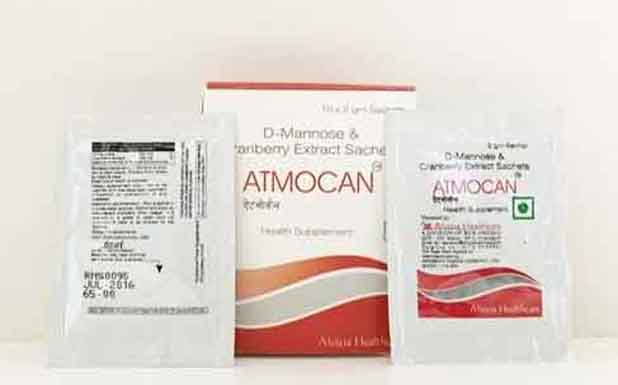
Composition
- Each Sachet Contains:
- D-Mannose
300 Mg
- Cranberry Extract
180 Mg
Packing
- 10X2GM
Sachets
MRP
- 65
Overview
Infections of the lower urinary tract are common occurrences in young adults especially young women, during pregnancy, and in peri- and postmenopausal women. Antibiotics are the first line therapy for urinary tract infection but of late there is growth in antibiotic resistance leading to decreased effectiveness in treating common infections.Resistance arises as a consequence of mutations in microbes and selection pressure from antibiotic use that provides a competitive advantage for mutated strains. Because of the chronic nature of urinary tract infections (UTIs) and the potential for antibiotic resistance, a natural approach to prevention and treatment is desirable.
Cranberry in UTIs:
Cranberry juice or extracts have anti adhesion and beacteriostatic action in addition to acidification property of urine. The proanthocyanidins in cranberry are suspected of preventing E. coli adhesion, and the fact they contain an A-type linkage is believed to be key to this function. Other plant extracts also contain proanthocyanidins, but contain B-type linkages. An ex vivo/in vitro study compared the anti-adhesion effect of cranberry proanthocyanidins with A-type linkages to green tea, grape juice, apple juice, and dark chocolate – all containing proanthocyanidins with type-B linkages.Cranberry juice demonstrated inhibition of adhesion at a concentration of 60 mcg/mL.Cranberry Extract for an Enhanced Effect:
Cranberries have been used in the treatment of UTI for many years and are now regarded as a nonpharmaceutical approach for the treatment and prevention of simple UTI infections. Like D-Mannose, cranberries are effective in the treatment of the majority of UTI caused by by E. coli.Cranberries and cranberry extracts acidify the urine, which reduces bacterial growth. Furthermore, cranberries also contain certain tannins called proanthocyanidins that have been shown to reduce bacterial adherence to the urinary tract wall. This is a significant benefit in the treatment of UTIs as adherence is essential for infection.D-Mannose in UTIs:
D-mannose is a simple sugar that prevents adherence of certain bacterial strains to uro epithelial cells of the bladder. It prevents 90% or more of UTIs that are caused by the bacteria E.coli.The Role of D-Mannose in the prevention and Treatment of UTI's:
Pathogenic E. coli bacteria’s pili “grappling hooks” are specially designed to attach to a simple c arbohydrate called D-Mannose, which is found on the cell surface receptors of the urinary tract host cells. When isolated urinary tract cells are bathed in D-Mannose, it acts as molecular “chaff.” The bacteria bind to the DMannose in their environment instead of to the D-Mannose on the cells. This gums up their pili and prevents them from hooking onto urinary tract cells. Although D-mannose can eliminate UTIs as quickly as conventional antibiotic drugs, it is far safer because it does not kill E. coli or any “friendly” bacteria. Instead, it makes it impossible for E. coli bacteria to stick to the lining of the urinary tract, which allows the normal flow or urine to wash the bugs down the drain.A Synergistic Combination:
D-Mannose is a simple carbohydrate that is fo und on cell walls. UTI causing bacteria recognize and latch on to D-mannose, which then allows them to infect the cell. Supplemental D-Mannose acts as a molecular decoy to prevent bacteria from attaching to and infecting bladder cells. Cranberry extract, on the other hand acts by acidifying the urine and also by reducing bacterial adhesion to the urinary tract wall. D-mannose and cranberry extract provide a natural, simple solution with no known side effects.Side Effects
- If pregnant or lacta ting, consult your physician before taking this product.
- Cranberry juice and d-mannose have been associated with gastrointestinal upset, nausea, vomiting, and diarrhea in some individuals.
- D-Mannose should not interfere with blood sugar regulation even for diabetics because so little is absorbed, though close monitoring is always advised. Consult your physician for more information.
Storage
Store in a cool dry and dark place.